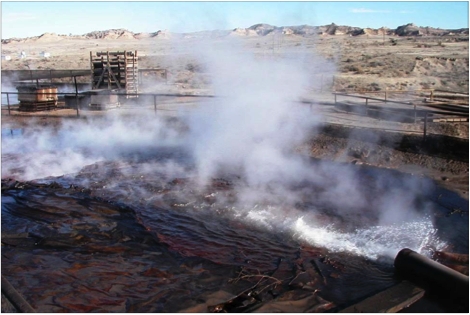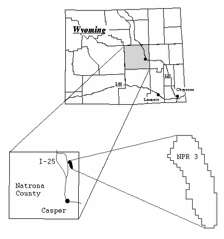During a stop in Costa Rica by a cruise ship, several passengers banded together to rent a van and get a guided tour of the sights. At a stop in the tour, three masked men brandished knives and guns attempting to hold up a female passenger at which time a 70 year-old military veteran grabbed one of the attackers, and subdued him (well, more accurately, killed him with his bare hands.) The other two attackers fled and after a short time to straighten things out with the local officials, the passengers were allowed back on the ship as the incident was clearly self-defense.
Aside from one attacker, no one else was harmed, though the female passenger was shaken up. This sounds too bizarre to be real…I’m going to guess that would-be thieves in Costa Rica think twice about future tourist holdups.
If you liked this entry, Digg It!
Tune: Waiting for my Ruca by Sublime
Technorati Tags: Rambo | Robbery | Self Defense | Mike Harding Blog
Commentary
Rambo takes a cruise
Business, Energy
More investment in clean tech
CalPERS (the California Public Employee Retirement System) doubled down earlier this week adding $400M to the $200M already set aside for clean tech investments. This is encouraging news as it means a large investor seeking outsized returns is seeing something they like in the clean tech space as well as the simple fact that $400M more is available to entrepreneurs in the segment.
Way to go CalPERS, you’re demonstrating great leadership. Thanks to John for the pointer to this event.
If you liked this entry, Digg It!
Tune: Desire by U2
Technorati Tags: Energy | Clean Tech | Investment | Mike Harding Blog
Energy, Innovation
Silicon-free Solar
Recently I ran across a reference to the Swiss company Flisom which is a 2005 spinoff of ETH Zurich (The Swiss Federal Institute of Technology.)
Traditional photovoltaic (PV) cells use monocrystalline silicon wafers to capture photons in sun light to excite electrons which are then directed to a conductor resulting in direct current. These PV cells are the prevalent technology installed in the marketplace today. Another variation on theme is to coat a silicon substrate with some sort of PV chemical mixture which then performs essentially the same process as pure silicon PV cells. The issue with these approaches is cost, manufacturing and material.
The latest research has revolved around nanocrystal, polymer, and photoelectrochemical cells. That’s where Flisom comes in, they seem to have figured out how to use the photoelectrochemical approach on a plastic foil substrate to harvest sunlight and convert it to direct current. The Flisom approach uses the Cu(In,Ga)Se2 compound (commonly called CIGS) sandwiched between a layer of Zinc Oxide (ZnO) on the top and Molybdenum (Mo) on the bottom. See a cross section of the material in the image below:

The efficiency demonstrated right now is 14%, which is pretty good for an emerging technology. If they can perfect this approach, the solar electric power landscape will change as the material can be cost effectively produced and all of the sudden common items like windows can become solar arrays inobtrusively and cheaply. That would be pretty cool…
If you liked this entry, Digg It!
Tune: Lake Charles by Lucinda Williams
Technorati Tags: Energy | Solar | Photoelectrochemical | Mike Harding Blog
Energy
Geothermal Co-production with Petroleum?
Here’s something interesting you may not know: when harvesting oil, there is often “waste water” mixed in the substance coming out of the hole, frequently the water is under pressure and hot. While at the Stanford Geothermal Conference last month, Mark Milliken covered this information during his talk.
Waste Water Discharge at Naval Petroleum Reserve #3

The Naval Petroleum Reserve #3 is really part of the Department of Energy’s Rocky Mountain Oilfield Test Center. As such, it’s not bound by the economic realities of having to produce or else and can experiment a bit with new drilling techniques as well as ponder the question: “what should we do with all this hot water?”
NPR #3’s location in Wyoming

At this particular site, some 6.4 million liters (1.7M gal) of 87°C (190°F) water is discharged per day as part of their oil production. This water is routed into a cooling pond and then released into Little Teapot Dome Creek when the water has cooled sufficiently. Curiously, the amount of oil produced from this activity is around 48,000 liters (12,600 gal) per day. As you can see, far more water is produced per day than oil! The raw power equivalent of this water is estimated to be 22MW, or enough to power some 25,000 homes per year. But, a small fraction of that raw power is available for harvest with existing technologies.
Where does all this hot water come from? The water is hypothesized to come from the Big Horn Mountain range where it soaks into the earth and descends to a series of hot rocks. It then migrates to the Powder River Basin and pours into fissures in Ten Sleep and Madison Limestone layers where it is extracted during petroleum operations. The heat map below will provide some context for how the NPR #3 site fits into the overall estimated heat flow at a 3km depth.
US Heat Map 3km depth

Using binary systems to extract the heat from this water could easily yield a couple of hundred kilowatts in a binary generation scheme. These units need around a 50°C (120°F) difference in temperature between the ambient temperature of production and the resource. It would seem likely that this could be established and maintained at this site and many others. It’s interesting to see this type of exploration underway and it could provide additional benefit (both ecologically and economically) to take advantage of this “free” by-product of an existing activity.
If you liked this entry, Digg It!
Tune: Boom Boom by John Lee Hooker
Technorati Tags: Energy | Geothermal | Oil | Mike Harding Blog
Business, Media
Viacom signs deal with Joost
In an attempt to salvage what little network savvy Viacom has shown (see Viacom destroys a $1B business opportunity) they’ve done a deal with Joost. An interesting play to be sure, though Joost is far from a sure thing. I still maintain that Viacom would have been dollars and kilometers ahead simply doing a deal with GooTube, and then doing one with Joost and perhaps Apple. This is starting to remind me of the bad old days of modems where you had to get manufacturer X’s modem to be able to talk to the same modem on the other end.
The modem stuff was a pain for years and couldn’t stand-up in the long term. This is a similar case, in the end, the consumer will win and the content will be freely available period. It’s not a question of if, it’s a question of when. The faster content creators realize they are being paid for what they will create going forward and content controllers realize that volume begets value, the better off it will be for content creators and the shareholders of content controllers.
If you liked this entry, Digg It!
Tune: Stop Whispering by Radiohead
Technorati Tags: Viacom | Joost | Media | Mike Harding Blog
« Previous Entries
» Next Entries



